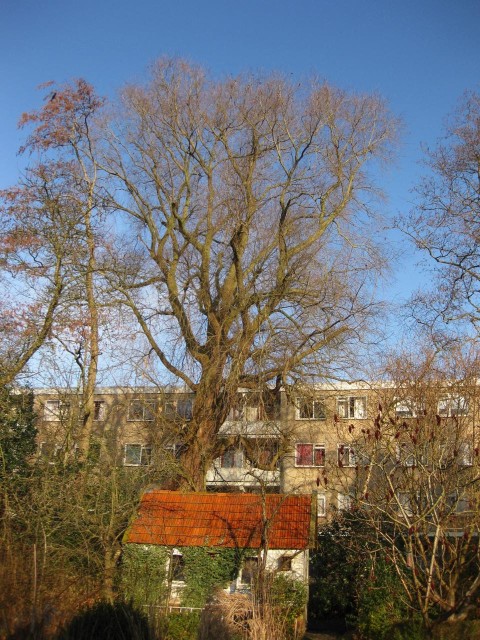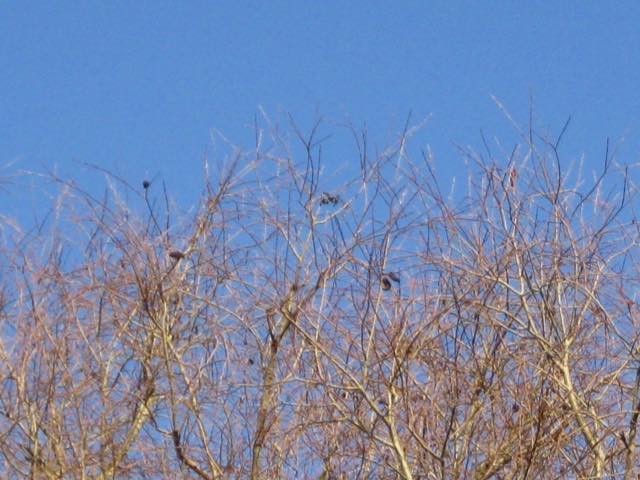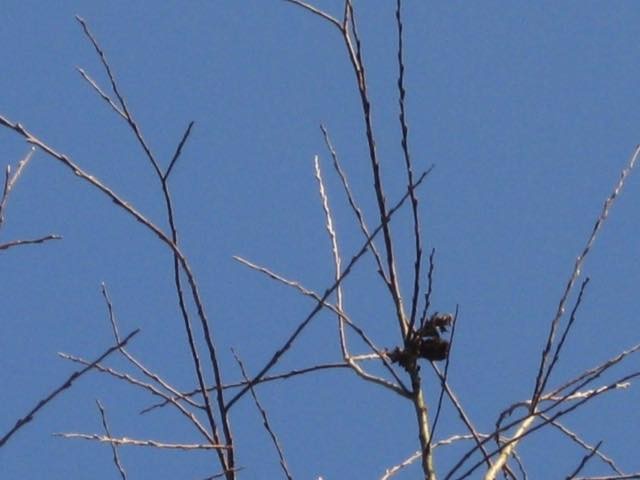Bijdrage voor een Engelstalige site, van bomen-volgers. Het idee erachter is om 12 maanden lang 1 boom te volgen. Wij hebben de grote wilg in de achtertuin gekozen.
It’s March 6th, light frost in the night, the day starts sunny. Our willow tree glows in the light of the low morning sun. The branches are still bare, but the willow is definitely less transparant then it was before. The buds are swelling.
The silhouet of the crown against the blue sky is sharp. It seems like a flock of birds in the top branches, but these birds don’t move. The dark patches are some kind of knobbly bits at the end of some branches. I noticed them for the first time a few years ago in a willow a few gardens away from ours, and last year they started to appear in our willow.
What it is i don’t know. Difficult to observe from ground level, so i will look extra careful the next time a branch breaks off by the wind. It might be some kind of gal, crown gal.



See also:
tree following 1
tree following 2
tree following 3

@ Hollis and Squirrelbasket
A local biologist helped me with the identification: the strange lumps in our willow tree are caused by a kind of mite, stenacis triradiatus or willow witches’ broom mite. In dutch: Wilgenbezemmite.
Cool silhouette. It’s nice to see the shape of the trees before they are again covered in leaves.
Galls are common on some kinds of willows here (Wyoming), often shaped like pine cones. I’m curious to hear what you learn.
It’s still a lovely tree – especially in the sunshine.
I am intrigued to know what the knobbly bits turn out to be!
Best wishes 🙂